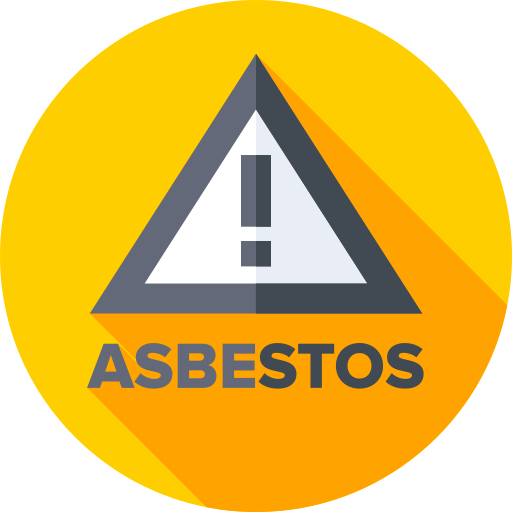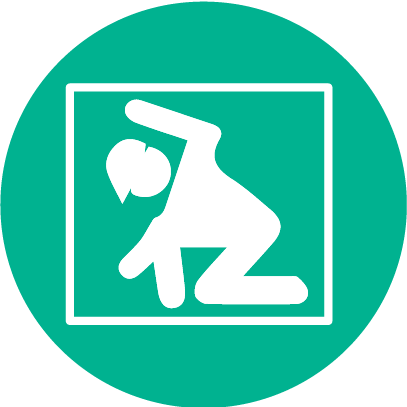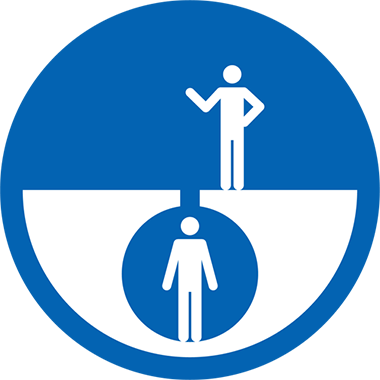SMSTS Mock Test

You have 30 minutes to answer 25 SMSTS Mock Test questions. You need to answer at least 20 out of 25 questions correctly to pass. Answers may be reviewed after each question or at the end of the test. Good luck!
Contents
- 1 SMSTS Mock Test
- 2 SMSTS Tests
- 3 SMSTS Tests by Category
- 4 SMSTS Course
- 5 What is the SMSTS course?
- 6 The SMSTS test
- 7 The SMSTS Programme of Study
- 8 Why take the SMSTS course?
- 9 Where can I attend the course?
- 10 How much does the SMSTS course cost?
- 11 How long is the course?
- 12 What are the SMSTS course books?
- 13 What is the SMSTS certificate?
- 14 The SMSTS Refresher course
- 15 Can you get a CSCS card with SMSTS?
- 16 What is the SMSTS Test?
- 17 What’s the purpose of the SMSTS exam?
- 18 How much does the SMSTS test cost?
- 19 What does the SMSTS test involve?
- 20 What is the pass mark for the SMSTS test?
- 21 Can you retake the exam if you fail?
- 22 How will mock SMSTS tests help me?
Taken at the end of the Site Management Safety Training Scheme, you’ll need to pass the compulsory SMSTS test to complete the course and receive your all-important SMSTS certificate.
If you don’t pass the test you won’t be able to cite attendance at the course when applying for managerial positions within the industry.
As Build UK’s recommended health and safety training for managers, whether you want to develop your career in civil engineering, construction or on building sites, you’ll need to complete the SMSTS test to progress through any part of the construction sector.
Our free online mock SMSTS test make it easy for you to prepare for your SMSTS exam in advance. Read on to discover all you need to know about the SMSTS course, the SMSTS test, pass rate and how to use mock tests to revise.
SMSTS Course
For managerial staff working in the construction industry, the Site Management Safety Training Scheme (SMSTS) is an essential part of health and safety training you won’t want to skip.
Designed for all managerial staff across the sector, the CITB SMSTS course covers all the critical information you’ll need to know to maintain high standards of health and safety practice in your role as a manager. Endorsed by everyone from Build UK to the United Kingdom Construction Group (UKCG), the SMSTS course is pretty much a standard expectation for all industry staff with managerial responsibilities for workers on a construction site.
Health and safety is high on the agenda for the construction industry. Whether you work in civil engineering, construction or on building sites, as someone overseeing others it’s critical you’re fully competent in this area. At the end of training you’ll receive valuable certification you can use when applying for roles in future.
What is the SMSTS course?
The SMSTS course is a comprehensive 5-day course designed by the Construction Industry Training Board (CITB). It is suitable for: site managers, project managers, site supervisors, business owners and clients already in role or those about to take up the position.
Delivered by the CITB, the course programme covers all you need to know about health, safety, welfare and environmental issues within the context of construction sites. You’ll learn about everything from your legal responsibilities to best practices and how to monitor site safety effectively.
From planning projects to team organisation and monitoring staff, the full spectrum of knowledge you’ll need in role is explored over the 5-day training programme. When you finish the course, you’ll have the peace of mind of knowing you’re fully competent in all aspects of health and safety you might encounter in role.
You can’t put a price on knowing you have all the necessary knowledge and skills required to keep you and the staff in your care, safe on-site at all times
The CITB training course is delivered in-person so you’ll need to physically attend training, though you don’t have to book to attend the 5 sessions in a row (more about that later).
The SMSTS test
You must attend all 5 sessions of the SMSTS course to pass and complete a 30-minute written examination on the last day of training.
The SMSTS exam forms part of your course assessment alongside a review of your participation during the course by your tutor as well as a case study task. The SMSTS test involves 25 questions, 20 of these will be multiple choice. There are You will need to achieve an 80% pass mark to pass the exam. The pass mark includes a set number of questions which must be answered correctly in order to qualify for certification.
If you do pass the SMSTS test, you’ll receive an SMSTS certificate to evidence your attendance and successful completion of the course.
The SMSTS Programme of Study
The full course programme will include: related legislation, relevant guidance, effective communication strategies, responsibilities of your role, building a culture of safe practice and industry good practice. You’ll be taught through a combination of: case studies, group and individual presentations, classroom discussion and a tiny amount of self-study.
Over the 5 days you’ll learn about health and safety in terms of:
- Electricity
- Excavations
- Working at Height
- Scaffolding
- Demolition
- Confined Spaces
- Risk Assessments / Method Statements
- Construction Design and Management (CDM) Regulations
- Recent Changes in Accepted Working Practices
- The Health and Safety at Work Act
- Behavioural Safety
- Management of Occupational Health
Why take the SMSTS course?
Robust knowledge and understanding of how to keep yourself and your staff safe on site is not to be overlooked. In fact, competence in construction site safety is central to your role as a manager and a high priority across the industry.
Historically, the construction industry, both across the world and here in the UK, has had a substantially lower performance for workplace health and safety than almost any other industry.
The CITB was set up to address the UK construction sector’s high rate of accidents on site. Critically, the Site Safety Plus courses, which include the SMSTS, are part of the CITB’s strategy to raise industry standards. The SMSTS exists as part of a collection of tailored, in-depth courses specifically developed for different groups of construction industry staff.
The Site Supervisor Safety Training Scheme (SSSTS) is a related CITB training course which forms the foundation for the SMSTS. The SSSTS is designed for site supervisors so if you’re currently a site supervisor and haven’t yet attended the SSSTS, you may want to take it first.
As a manager working within the industry, you’ll be expected to both promote and operate to the highest standards of health and safety. It will be central to the efficient delivery of your role as well as the staff who work under you. Taking the CITB SMSTS course ensures you’re fully equipped to lead the facilitation of good, safe practice on site.
Where can I attend the course?
The SMSTS is an in-person course so you will physically need to attend training at one of the CITB’s three National Construction Training Centres. CITB National Construction Training Centres are located in Norfolk, Kent and Suffolk. If none of these locations suit you, you could attend the course via one of the CITB’s approved training partners or organise for training to be delivered on-site at your location.
For training to be administered at a location of your choice you will need to have between 6 and 60 participants in attendance. The training will be delivered by trainers from the CITB.
If you want to study more locally with a CITB-approved training partner you can browse the list of approved outlets on the CITB website.
How much does the SMSTS course cost?
Attendance for the 5-day SMSTS course will cost you £615 in total. The cost includes refreshments as well as lunch and you’ll incur no further costs during the training. You can get help with the cost of the SMSTS course, visit the grants and funding page on the CITB website.
How long is the course?
If you’re concerned about taking 5 days off in a row for training, you don’t have to attend each day of the CITB SMSTS course within the same week. Instead, you can split your attendance over 5 weeks so you train for one day each week.
What are the SMSTS course books?
There are two CITB course books which accompany the course. You will refer to both during the 5 training sessions and crucially be allowed to use them during the final ten minutes of your SMSTS test. Both books can be obtained from the CITB online bookshop but the cost for the books is already included in the course fee so you’ll receive them during training.
The 2 course books for the SMSTS are:
- Construction Site Safety (GE 700)
- SMSTS Delegate Workbook (XA6)
What is the SMSTS certificate?
If you pass your SMSTS, you’ll receive your SMSTS certificate, officially known as a Site Safety Plus Certificate. The Site Safety Plus Certificate has great weight in the construction industry and you’ll be able to cite the award when applying for jobs. Your SMSTS certificate will arrive within 4 weeks and lasts for 5 years.
If you want to retain certification beyond the 5 years you’ll need to take the SMSTS Refresher Course.
The SMSTS Refresher course
The SMSTS Refresher Course is intended to ensure your knowledge and practice remains current. It’s a one day in-person course covering all updates and developments since you last trained.
Once you’ve successfully completed the SMSTS Refresher you’ll retain SMSTS certification. However you must complete the refresher course, officially called the Site Management Safety Training Scheme Refresher (SMSTS – R), before your existing certificate expires.
Can you get a CSCS card with SMSTS?
Taking and passing the CITB SMSTS course doesn’t automatically lead to you acquiring a CSCS card.
The CSCS (Construction Skills Certification Scheme) is another CITB strategy to improve industry health and safety. That means CSCS cards and the SMSTS are related because they’re both CITB initiatives. However, attending training doesn’t result in a CSCS card.
Yet you could find yourself closer to getting a CSCS card because SMSTS training covers all you need to know about your health and safety responsibilities as a manager within the industry. CSCS cards are designed to ensure you have this same knowledge.
To qualify for a CSCS card you need to meet certain requirements related to national qualifications and in some cases training. Your health and safety knowledge is tested through a CSCS test. Passing the SMSTS course will equip you with the knowledge you need to pass the CSCS Managers Test necessary to get a black or white CSCS card.
Black and white CSCS cards are the two CSCS cards specifically awarded to those working in managerial roles or with management-level national qualifications.
Therefore the SMSTS will equip you with the knowledge you need to pass the CSCS test for a black or white card but you’ll still need to meet the academic requirements for a white card (ie. industry-related degree, HND etc) or the vocational criteria for a black card (ie. sector-related NVQ, SVQ, apprenticeship etc.) to actually obtain a CSCS card.
What is the SMSTS Test?
At the end of the 5-day CITB Site Management Safety Training Scheme (SMSTS), you’ll face a written examination, known as the SMSTS test. The exam will test your knowledge of the many areas of health, safety, welfare and environmental issues covered during the course, each within the context of work on construction sites.
Topics covered during the SMSTS course include:
- Electricity
- Excavations
- Working at Height
- Scaffolding
- Demolition
- Confined Spaces
- Risk Assessments / Method Statements
- Construction Design and Management (CDM) Regulations
- Recent Changes in Accepted Working Practices
- The Health and Safety at Work Act
- Behavioural Safety
- Management of Occupational Health
What’s the purpose of the SMSTS exam?
The SMSTS is an industry standard for management health and safety training. Designed solely for site managers, site supervisors, business owners and clients, it’s essential those holding SMSTS certification truly are competent in required levels of health and safety.
Having historically had incredibly low performance for workplace health and safety, the CITB Site Management Safety Training Scheme is part of a suite of important courses designed to help the UK construction industry significantly raise standards of health and safety practice.
Though an exam may not be what you want to face, the SMSTS test is intended to ensure high rates of accidents and injuries on UK building sites are reduced in frequency to a rate in line with other industries.
Without a formal examination, it’s impossible to prove participants have acquired the level of knowledge intended by the CITB when they designed the course. That’s why there’s a high pass rate you’ll need to achieve to gain Site Safety Plus certification for managerial positions.
If examinations are not your thing, do take heart from the fact both tutor feedback and course assessment do form part of your final mark. Don’t forget too, your efforts will mean you can apply for higher positions in the industry. The SMSTS course is supported across the sector by everyone from the United Kingdom Construction Group (UKCG) to Build UK so when applying for managerial positions, you’ll see the SMSTS is a standard requirement detailed in the job spec.
How much does the SMSTS test cost?
The cost of the SMSTS exam is included in the £615 fee for the course. If that sounds like a huge sum, don’t worry you can get help with costs. You’ll find details on the CITB website.
What does the SMSTS test involve?
The SMSTS test lasts for 30 minutes during which time you will need to answer 25 questions. The test is a written exam composed of 20 multiple choice questions and 5 longer questions that require a short written answer. You must get all 5 longer questions right to pass the SMSTS test, they are worth up to 3 points each. The exam questions will cover any of the 12 topics covered during the course.
During the last ten minutes of the exam you will be allowed to use the 2 course texts, Construction Site Safety (GE 700) and SMSTS Delegate Workbook (XA6), to help you. You will receive the books on the course because they are paid for as part of your course fee. If you do need either book in advance, you can purchase both books from the CITB bookshop.
Your final assessment also includes a review from your trainer about your participation during course activities plus completion of a case study.
Once you’ve passed the course you’ll soon receive an SMSTS certificate through the post, officially known as a Site Safety Plus Certificate. When you apply for jobs, your certificate provides the proof you’ll need to show you attended and passed the course.
What is the pass mark for the SMSTS test?
The pass mark for the SMSTS test is 80% to pass. You must answer 20 out of the 25 questions correct. 5 of the 20 must be all 5 of the longer written questions.
Although this pass mark may sound challenging, you can use our mock SMSTS tests to help you revise and develop the necessary level of skill to achieve the pass mark before the date of your examination.
Can you retake the exam if you fail?
If your pass mark is above 71% and you pass the trainer review but fail the 5 written questions, you can re-take the test. However, you must re-sit the test within 90 days by attending the final day of another SMSTS course or you can re-take it on the day.
If your pass mark is less than 71% you’ll have to attend the course again. Luckily our practice SMSTS tests are here to ensure that doesn’t happen so you don’t have to waste your money or time!
How will mock SMSTS tests help me?
Our SMSTS mock tests are similar to the real SMSTS test. Practising exams under test conditions really is the key to passing timed tests. Our mock tests work to exactly the same timescale as the real thing. You’ll gain plenty of experience in completing all the multiple-choice questions as well as all the written questions within the allocated time. They also include SMSTS 5 safety critical questions examples.
Our useful online tools include a voiceover tool for optional audio support, a pause button so you can freeze the timer to consider your answer without damaging the hard work you’ve already done and a check button so you can see if an answer is right before moving on.




















